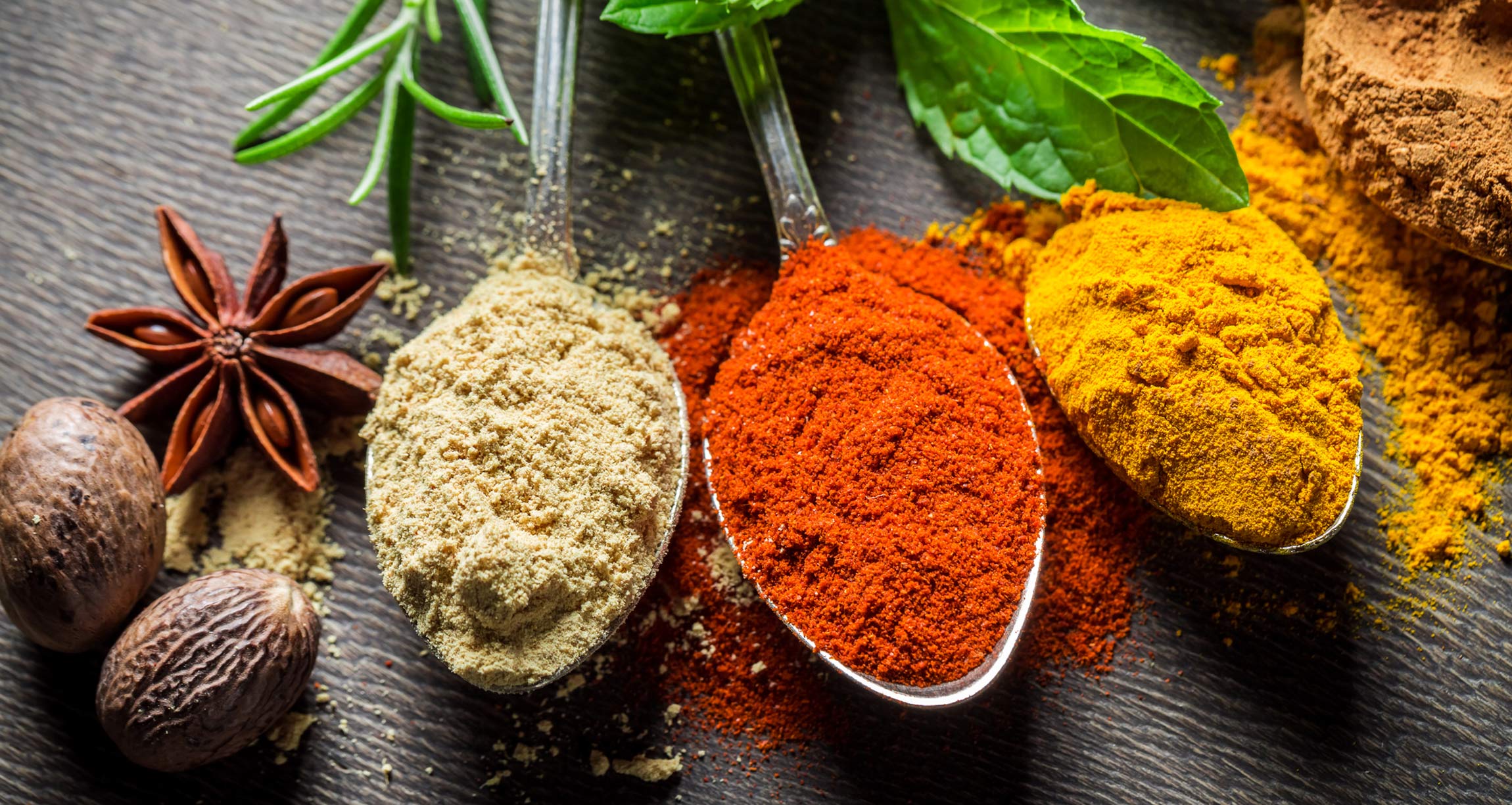By Ocean Robbins • Adapted from Ocean Robbins’ book 31-Day Food Revolution. Get your copy here now.
Every culture is defined, in part, by the spices used in its cuisine.
In India, there’s cardamom and cumin. In Italy, there’s basil and oregano. In Mexico, there’s chili, garlic, and cilantro. In Thailand, there’s lemongrass, sweet basil, and galangal. And in North America, there’s a bit of everything in the culinary melting pot.
But what is North America most known for adding to the mix? Salt, sugar, and fat.
Not that North Americans don’t use spices. They’re just not what North American cuisine is typically known for. And speaking as a North American, I think that’s a shame.
Fortunately, you don’t have to live in Thailand to enjoy kaffir lime leaves. Or in Mexico to partake of green chilies.
Herbs and spices travel the globe. And they don’t just bring wonderful, mouthwatering bursts of flavor. They also bring stunning levels of nutrition.
Cooking with herbs and spices is an art form. Knowing which ones are especially good for you is science.
Learning about and using the following healthy spices can make a world of difference in your kitchen — and for your health.
5 Healthy Seasonings to Add Incredible Flavor and Health Benefits to Your Food
1. Turmeric

Turmeric is a flavorful addition to sauces, curries, stir-fries, and casseroles.
Popular in India for more than 5,000 years, it’s widely thought to be one of the primary reasons that country has one of the world’s lowest rates of Alzheimer’s disease.
Turmeric is known for its bright orange color. In fact, it’s sometimes used as a coloring agent. The orange comes from a polyphenol called curcumin, which is something of a miracle compound.
Hundreds of studies have demonstrated that curcumin may help prevent or even reverse Alzheimer’s and other forms of dementia, reduce unhealthy levels of inflammation, protect against heavy metal toxicity, and even lower heart disease risk.
The average daily intake of curcumin in India is thought to be about 125 mg — the amount found in about a half-teaspoon of turmeric powder.
Research has found low rates of certain types of cancer in countries where people eat 100 to 200 mg of curcumin per day over long periods of time.
If a half-teaspoon of turmeric seems like a lot, you might consider a curcumin supplement. My personal favorite (made by a company that also supports Food Revolution Network) contains a potent, absorption-boosting breakthrough. You can see more about it (and get a special discount offer) here.
And one more tip: You’ll get better curcumin absorption if you combine turmeric with some black pepper and/or a bit of (healthy) fat.
2. Garlic
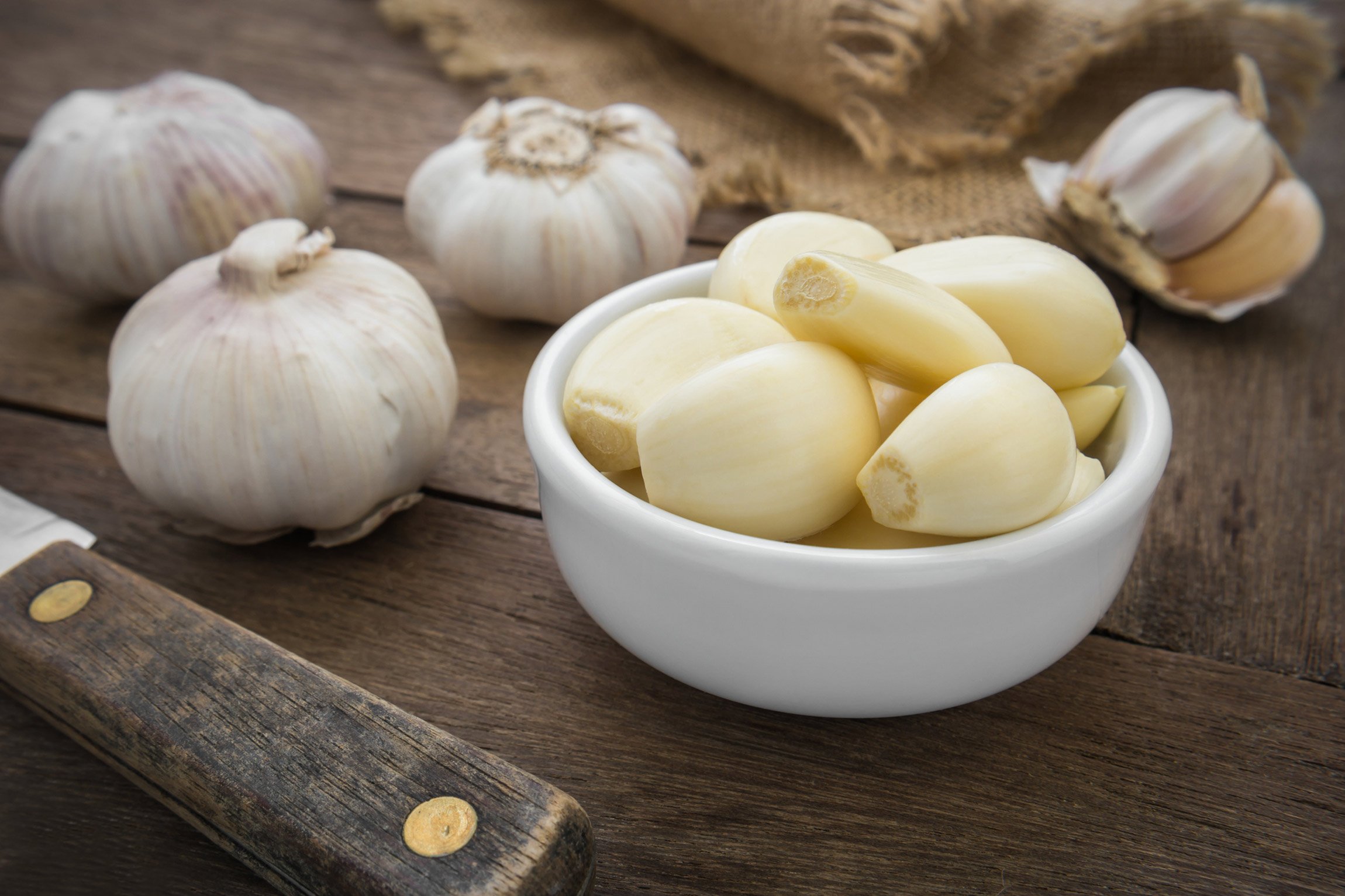
Garlic can be chopped, minced, blended, or eaten as a powder.
It’s delicious in pasta sauces, soups, and almost any savory dish. People at the annual garlic festival in Gilroy, California, have even been known to make garlic ice cream, though I can’t say I recommend it!
Garlic is known for helping to ward off the bad guys. But instead of hanging it over your doorway to scare away vampires, you can eat it to fight off certain cancers.
Researchers studied 41,387 Iowa women, tracking their consumption of 127 foods over five years.
The food found to be most highly associated with a statistically significant decrease in colon cancer was garlic. Women with the highest amounts of garlic in their diets had a 50% lower risk of certain colon cancers than women who ate the least.
Another study of 5,000 men and women, conducted in China over five years, found that a garlic extract was linked to a 52% reduction in stomach cancer rates, compared to a placebo.
Garlic has been rumored to help fight colds and flu. But is this folklore backed up by real-world science?
A team of researchers studied 146 participants, giving half of them a garlic tablet and half a placebo tablet, every day for three months.
The people who took the placebo reported cumulatively catching 65 colds. The people who took the garlic reported only 24. And for those garlic-takers who did catch a cold, the symptoms ended 20% sooner. (For other immune-boosting foods, read this article.)
3. Ginger
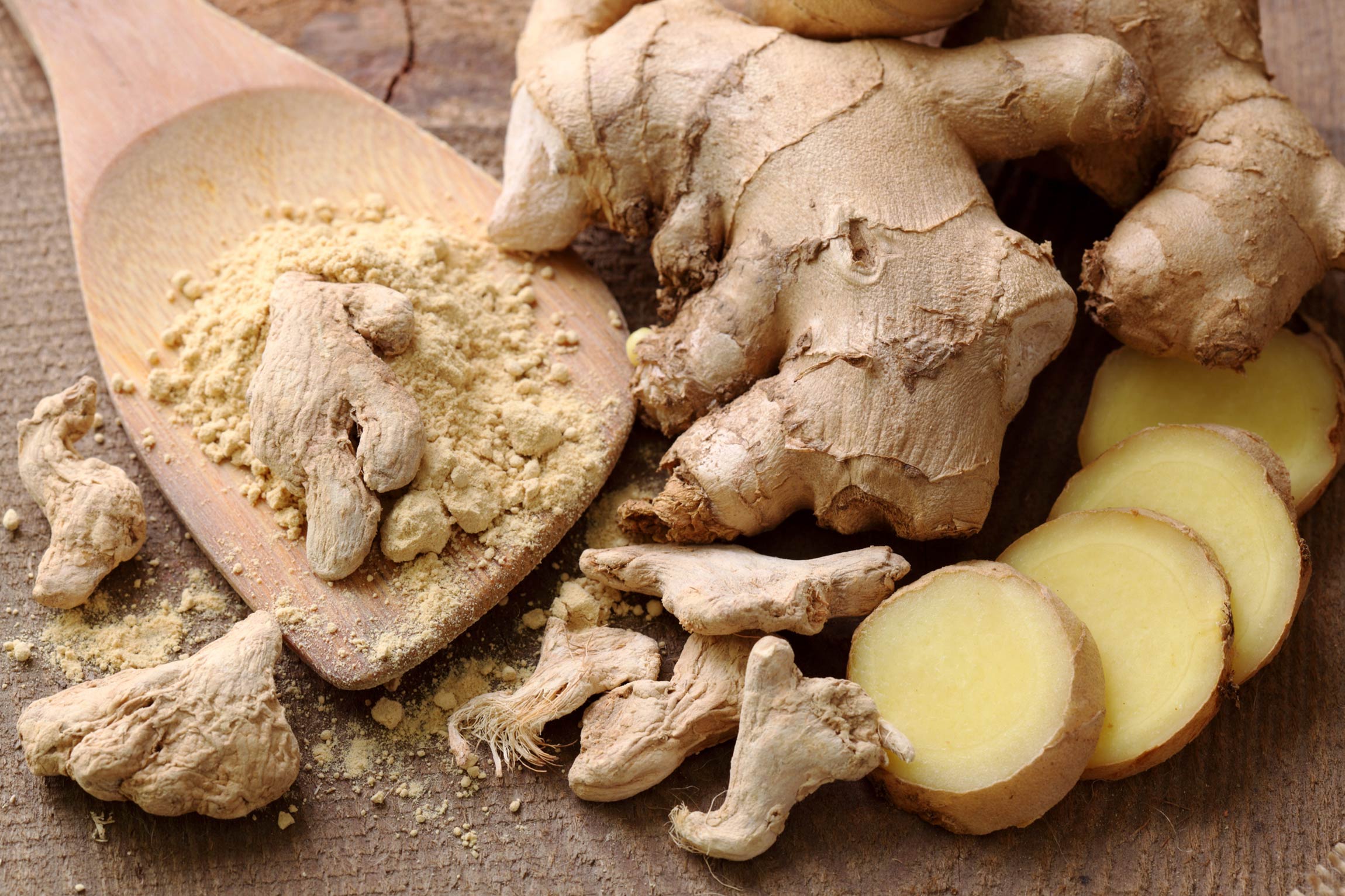
Ginger is one of my favorite spices. It has a refreshing, clean, invigorating flavor. I love it in soups, stir-fries, casseroles, salad dressings, smoothies, stews, and desserts.
If you like, you can mix ginger powder or ginger tea with sparkling water and stevia for a healthy, homemade ginger ale.
Ginger can be used to treat stomach problems, including motion sickness, morning sickness, colic, upset stomach, irritable bowel syndrome, gas, diarrhea, nausea, and loss of appetite.
It has potent anti-inflammatory properties. And some people find it very useful in relieving pain caused by rheumatoid arthritis, osteoarthritis, and menstrual cramps.
As if all that weren’t enough, ginger has also been found to be extraordinarily effective in the treatment of migraines.
If you’ve ever suffered from a migraine, you know that it’s way more than a headache. Migraines make normal activities impossible for an estimated one billion people worldwide. And migraines are responsible for billions of dollars in health care costs.
But could a natural remedy like ginger really work as well as drugs, with fewer side effects?
In 2014, a double-blind, randomized controlled clinical trial was published in Phytotherapy Research. Researchers studied 100 people experiencing moderate to severe pain from migraines.
Half the study participants were given one-eighth of a teaspoon of powdered ginger, and half were given a standard dose of sumatriptan, also known as Imitrex — one of the top-selling, billion-dollar drugs in the treatment of migraines.
The results? Both worked equally fast.
Most participants started out with moderate or severe pain. After taking either the drug or ginger, they were either in mild pain or completely pain-free. The same proportion of migraine sufferers reported satisfaction with the results, whether they took sumatriptan or ginger.
But with ginger, there were substantially fewer negative side effects. With sumatriptan, some people reported dizziness, a sedative effect, vertigo, and heartburn. The only adverse side effect for ginger was that two of the ginger-taking participants reported an upset stomach.
If you want to try the natural migraine remedy, mix 1/8 teaspoon powdered ginger in water at the first sign of a migraine. Drink it, and see if your headache lessens or goes away within half an hour.
Compared to sumatriptan, ginger not only spares you the side effects — but it also comes at about 1/3,000th the price. And it just might do the job.
4. Cinnamon
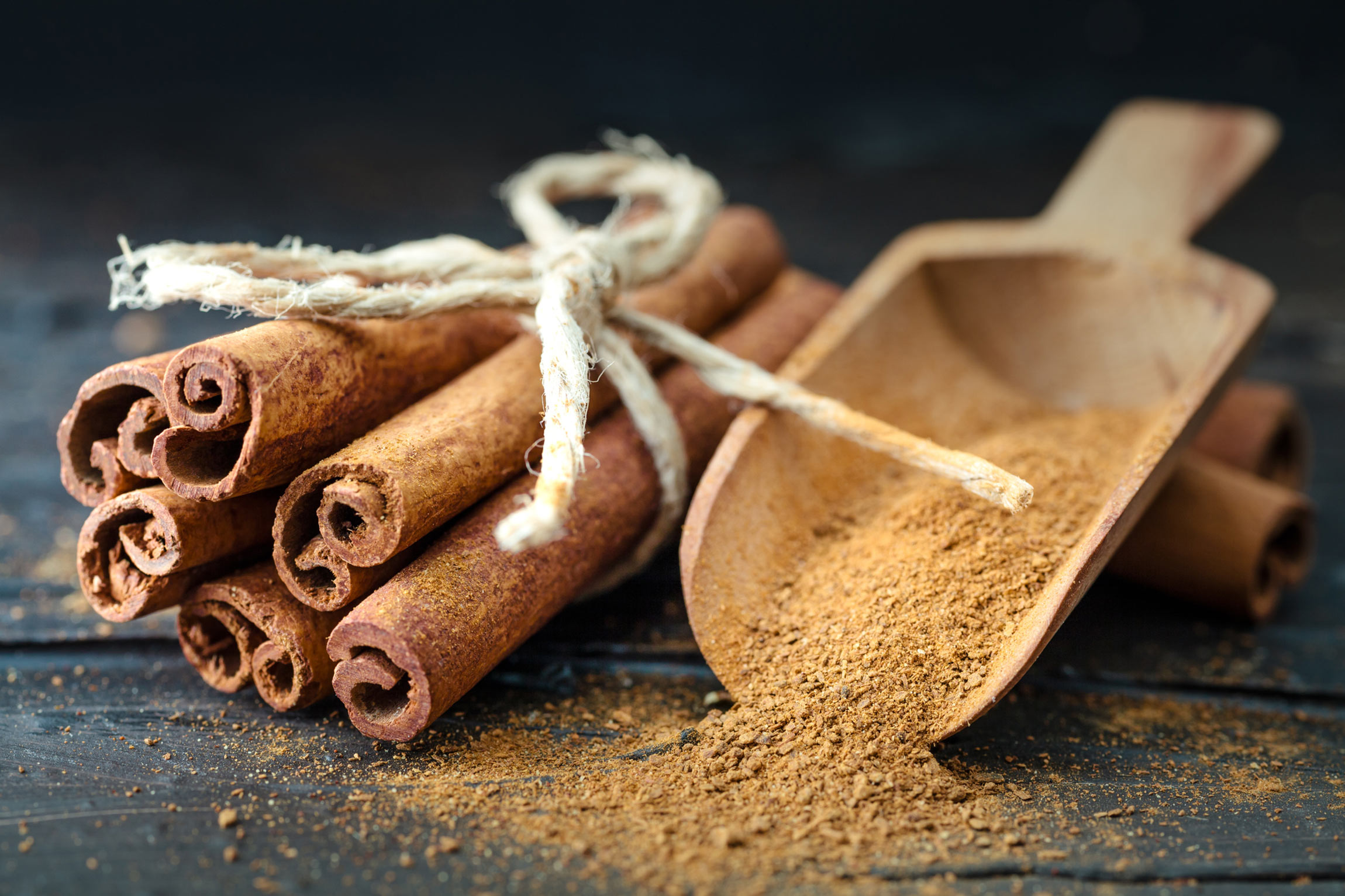
Cinnamon is one of the most popular spices in the world. It’s made from the inner bark of a genus of a tree called Cinnamomum.
When strips of it dry, they curl into rolls, called cinnamon sticks. The sticks can also be ground to form a powder. This mild-mannered, delectable spice can flavor drinks, baked goods, oatmeal, stir-fries, and dishes both savory and sweet.
For thousands of years, cinnamon has also been prized for its potent medicinal properties. It’s loaded with polyphenols and other antioxidants.
Cinnamon is an anti-inflammatory, antidiabetic, antimicrobial, anticancer, lipid-lowering, and cardiovascular-disease-lowering superstar.
Whoever knew that such a sweet spice could be so potent a healing force!
5. Hot Peppers
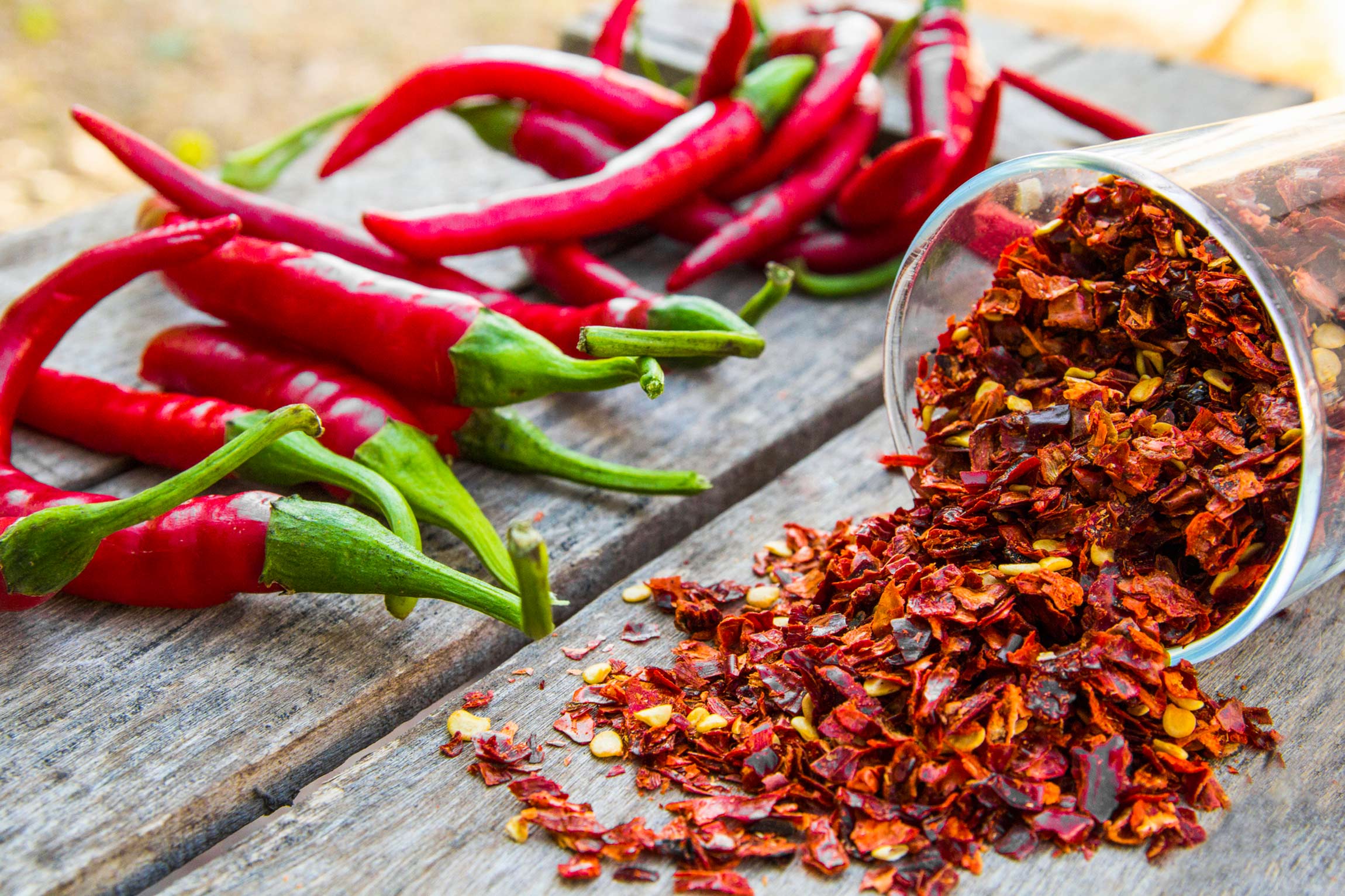
Hot peppers look a lot like bell peppers, but with one major difference. They contain a compound known as capsaicin, which is colorless and odorless — but definitely not flavorless!
Capsaicin is so intensely spicy that many people can tolerate hot peppers only in small amounts. The capsaicin that brings peppers their heat is also a powerful medicine.
Chili peppers aid digestion by promoting salivation, boosting the stomach’s defense against infections, increasing digestive fluid production, and helping to deliver enzymes to the stomach.
In a 2017 study conducted on mice, researchers found that the capsaicin in hot peppers was able to alter the composition of gut bacteria, promoting more beneficial strains.
This, in turn, led to lower levels of chronic inflammation and obesity.
In another study, 16,179 human participants were tracked for an average of more than 15 years. After factoring out demographic, lifestyle, and clinical characteristics, the people who consumed hot peppers had a 13% lower rate of mortality throughout the study. Put in plain English, people who ate more hot peppers were more likely to live longer.
There are many varieties of hot peppers, and their level of capsaicin ranges from mild to intense. Some people love the spiciness, but others, especially children, may not. Here’s a tip: Instead of mixing hot peppers into a whole dish, you can arrange them on top or serve them separately.
A word to the wise: When you chop hot peppers, be careful to wash your knife, cutting board, and hands with soap afterward, and be sure not to touch your eyes before you’ve washed your hands. I’ve learned from personal experience that capsaicin can burn eyes (and other sensitive parts of the body!).
Plus, There Are Many More Healthy Spices
Turmeric, garlic, ginger, cinnamon, and hot peppers barely scratch the surface in the wonderful world of healthy spices. Your spice cabinet is a virtual pharmacy of medicinal compounds.
Nutmeg, cloves, basil, dill, oregano, thyme, sage, parsley, fennel, and many other healthy spices and herbs contain substances that could help fight cancer and heart disease, reduce inflammation, stabilize your blood sugar, fend off dementia, and add culinary delight to your menu.
5 Delicious, Plant-Powered Recipes Made with Healthy Spices
When it comes to healing spices, the sky’s the limit on what these tiny but mighty culinary delights can create. If you’re a fan of sweet, savory, or a combination of the two, playing around with a variety of spices in your meals can unlock worlds of nourishing potential, optimizing your health in various ways. Whether you’re new to the world of nutritious spices or already enjoy experimenting with these beauties of the plant kingdom, we hope these recipes serve as tasty inspiration for your next lively plant-based meal!
1. Turmeric Tahini Slaw
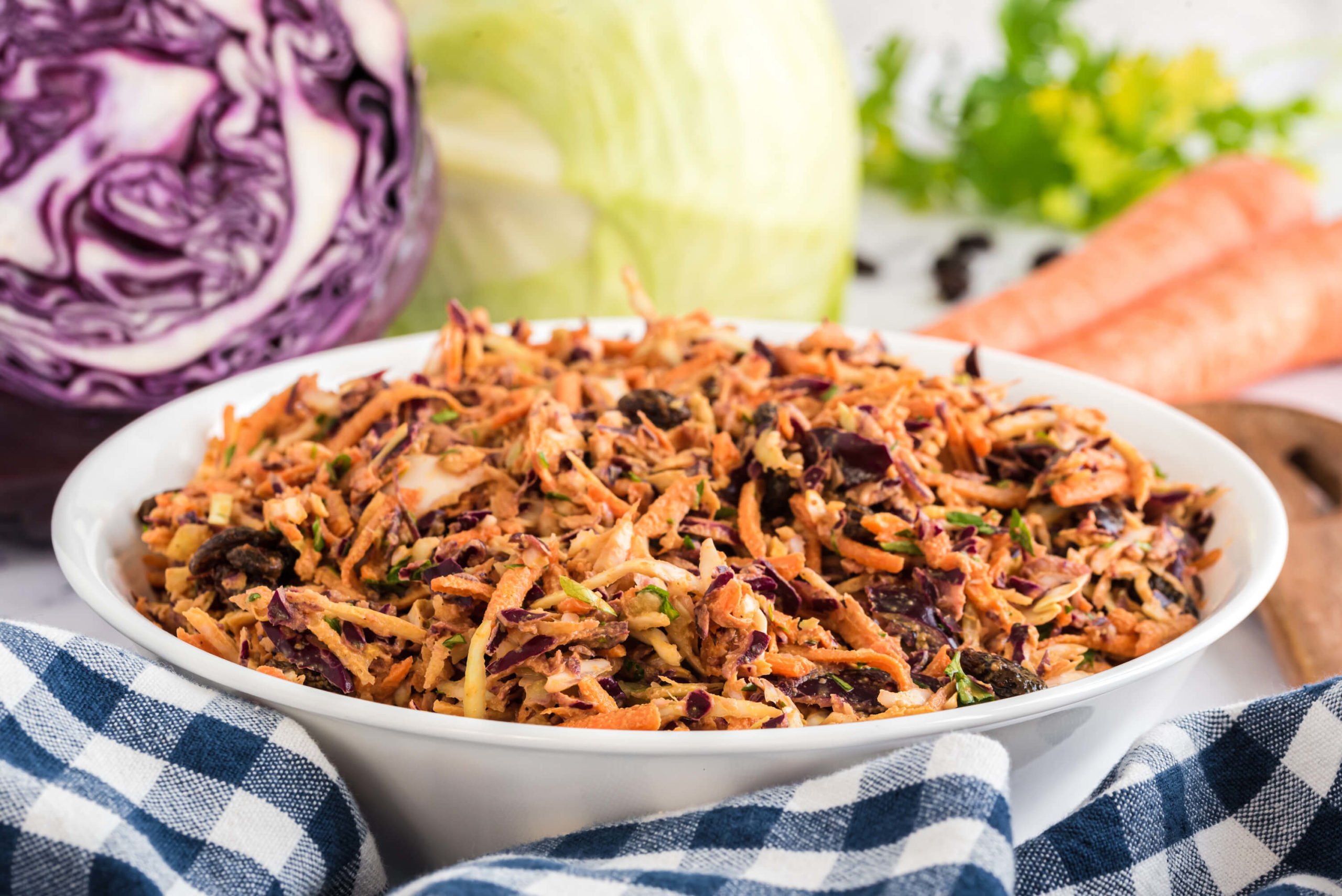
The healing benefits of turmeric and hot chili peppers are the true stars of this show. Just a touch of cayenne pepper goes a long way (unless you want to turn up the heat) in this crunchy slaw, and you’ll still get to reap all the rewards that capsaicin has to offer. Better digestion, lots of fiber, a cornucopia of colorful veggies and powerful anti-inflammatory benefits from the turmeric and cayenne – what’s not to love?
2. Warm Garlic and Herb Lentils
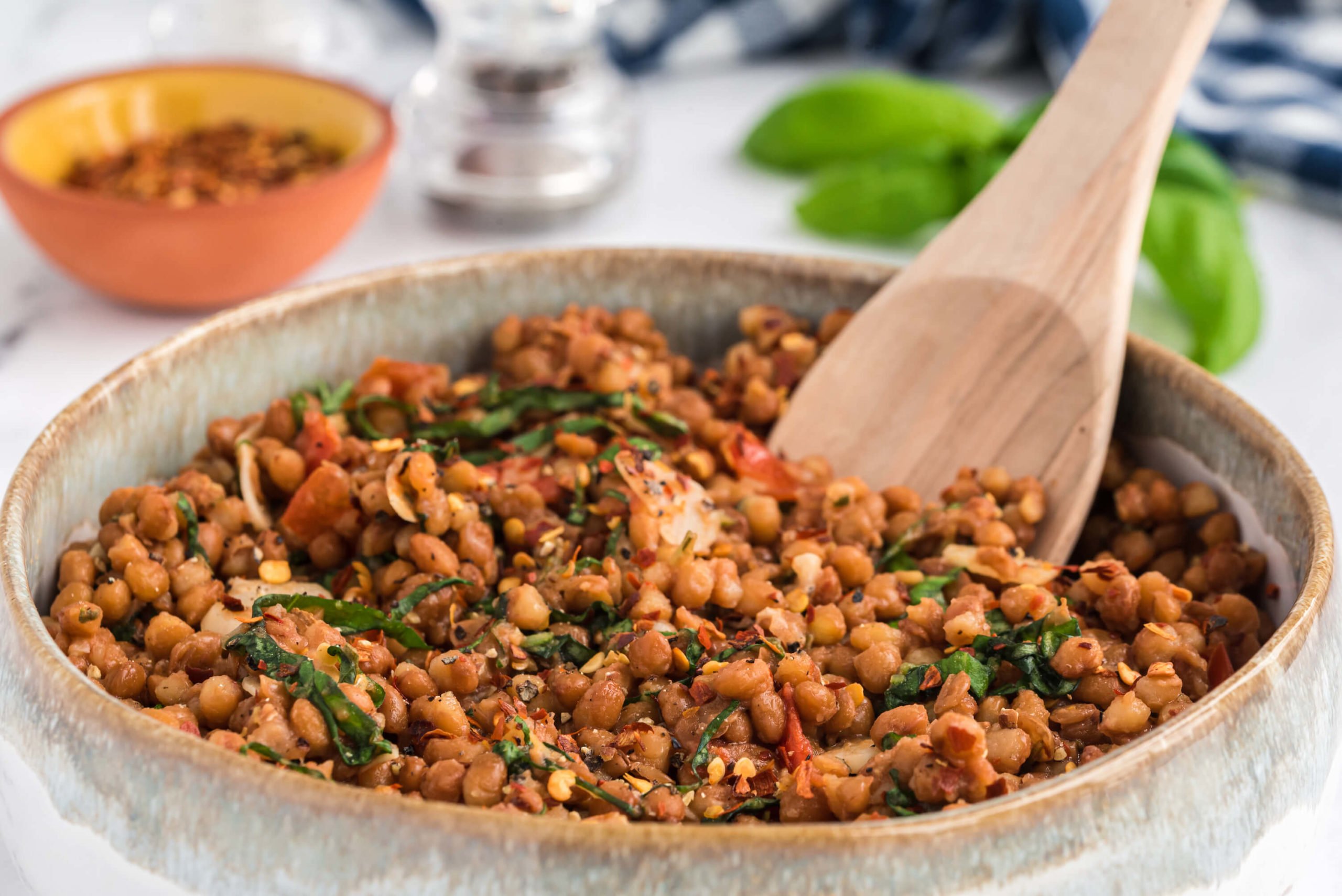
If you’re looking for a simple meal that harnesses the flavor and healing capabilities of spices, then look no further than Warm Garlic and Herb Lentils. This dish is an easy (and tasty) introduction to the world of healthy herbs and spices. Warm lentils mixed with fresh rosemary, basil, and healing garlic brings feelings of well-being, warmth, and comfort to your table. How can something so simple be so satisfying and nourishing? We know — plants are magical!
3. Root Veggie Ginger Soup
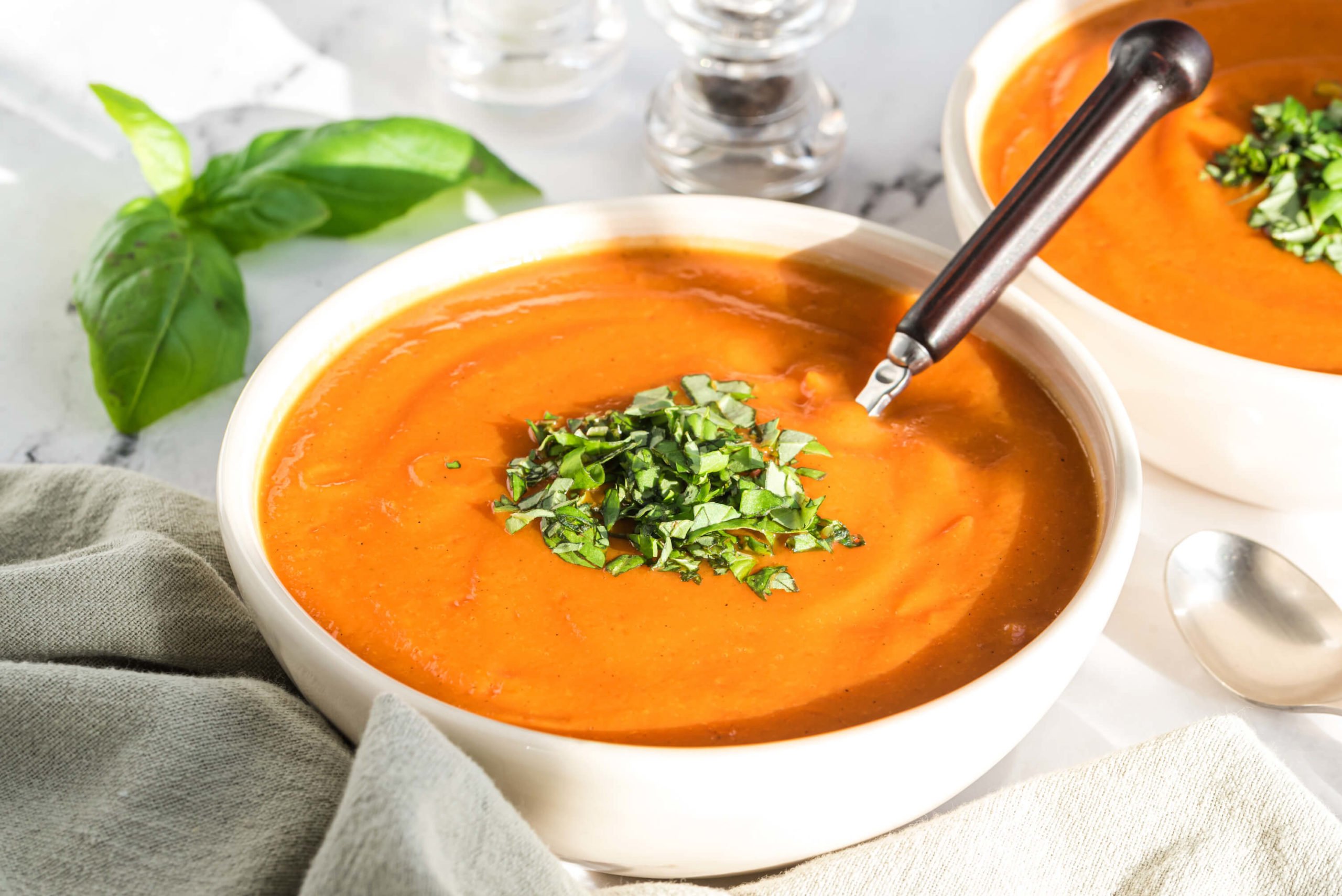
Ginger is the star spice in this versatile soup! Warm, invigorating, and slightly spicy, Root Veggie Ginger Soup welcomes any root veggies you have on hand. Out of butternut squash? Try it with sweet potato. Not quite ready to dive into the flavor of parsnips? Give turnips a try. The options are just about endless. What’s more, this soup is a great go-to when you’re feeling a bit under the weather, thanks to all of ginger’s healing properties!
4. One Pot Curry Cauliflower Chickpea Chili

One-Pot Curry Cauliflower Chickpea Chili offers a sweet and savory flavor profile with the addition of turmeric and cinnamon. Loaded with antioxidant and anti-inflammatory properties from both, this Indian-inspired chili has an abundance of healing plant-power in every bite!
5. Slow Cooker Apple Butter

This silky smooth butter showcases just about everyone’s favorite spice — cinnamon! It makes a wholesome addition to your favorite bowl of oats, as a topping for breakfast hotcakes, or as a sweet warm dipping sauce for a delicious fruit board. No matter which way you serve it, enjoy the nourishing and healing benefits of cinnamon and apples!
Now that you know about five of the planet’s healthiest spices, how will you use them (besides in these recipes, that is 😉)?
Spice Up Your Life the Healthy Way
Healthy food can be delightfully flavorful without unhealthy ingredients, like loads of salt and sugar.
Herbs and spices create dishes that engage the senses. And they’re packed with health-boosting, disease-fighting nutrients.
Tell us in the comments:
- What are your favorite healthy spices?
- What are your favorite recipes featuring these healthy spices?
- How else do you add flavor to food in a healthy way?
Featured Image: iStock.com/Shaiith
